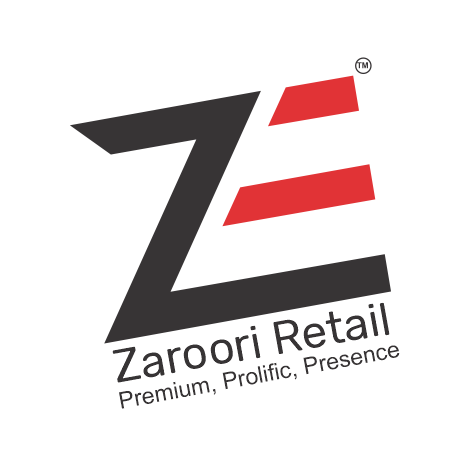Plan your premium brand’s entry into India’s top online marketplaces. Get the essential strategy for positioning, logistics, and legal compliance. Start growing today.
Introduction
The Indian e-commerce landscape is projected to reach $150 billion by 2027, driven by a surge in high-net-worth consumers seeking luxury and premium products. However, simply listing products is not enough; a clear, premium online marketplace entry in India requires strategic planning to protect brand equity and ensure profitability. This comprehensive guide details the critical factors from platform selection and logistics to anti-counterfeit measures that global and local brands must master to achieve success in India’s lucrative digital market.
Table of Contents
- Introduction
- The Unique Premium E-commerce Consumer
- Choosing the Right Marketplace Platform
- Mastering Logistics and Fulfillment
- Maintaining Brand Integrity and Pricing
- Legal and Compliance Essentials
- Conclusion
- FAQs
The Unique Premium E-commerce Consumer
The success of a premium online marketplace entry in India hinges on understanding the buyer. Unlike value-focused shoppers, the premium consumer seeks authenticity, experience, and speed. They are digitally savvy, trust influencer endorsements, and expect exceptional post-sale service.
Brands must focus on high-quality product imagery, engaging brand storytelling, and proactive customer support to justify the premium price point. This buyer segment is less price-sensitive than they are quality-sensitive.
Learn about our E-commerce Brand Management Services
Choosing the Right Marketplace Platform
Selecting the correct platform is the foundational decision for your online marketplace entry in India. Each major player caters to slightly different demographics and categories.
Platform Selection: Exclusive vs. Broad Reach
Brands must decide if they prefer an exclusive marketplace (focused on luxury/boutique products) to immediately establish a high-end perception, or a broad-reach marketplace (like Amazon India or Flipkart) to leverage massive user traffic. The trade-off is often control versus volume.
Seller Fees and Commission Structures
Premium brands often face higher commissions due to value-added services like specialized packaging and returns handling. Thoroughly analyse the net margin post-commission, platform marketing costs, and payment gateway fees.
Support for Luxury Features
The platform must support your brand’s visual standards. Look for features like high-resolution image galleries, video integration, and the ability to participate in live commerce events, which are increasingly popular among premium Indian consumers.
Mastering Logistics and Fulfillment
Logistics is a critical differentiator for premium customers who expect prompt, secure delivery.
Warehousing and Inventory Management
Maintaining localized inventory is crucial for meeting consumer expectations of fast delivery. Brands have three primary options: utilizing the marketplace’s fulfillment services (like Fulfillment by Amazon) offers the fastest speed for standardized goods. Alternatively, a third-party logistics (3PL) partner provides greater control, which is often preferred for high-value or fragile items requiring custom packaging. Finally, direct-to-consumer (D2C) fulfillment offers the most control over the brand experience, ideal for highly exclusive products. For high-end fashion, a 3PL partner for white-glove delivery is often recommended, while consumer electronics generally benefit from the reliability and wide Pin Code reach of Marketplace Fulfillment.
Reverse Logistics and Premium Returns
A smooth, hassle-free return process builds trust. Premium customers expect expedited pickups and quick refunds. This requires detailed Standard Operating Procedures (SOPs) for inspection upon return to prevent damage and counterfeiting.
Maintaining Brand Integrity and Pricing
Price wars can quickly erode brand equity. A premium brand must deploy strict strategies to manage its image across all online channels.
Monitoring and Anti-Counterfeit Measures
Brand protection is paramount. Implement proactive monitoring to detect unauthorized sellers and counterfeit listings. Utilize marketplace brand registry tools and legal takedown processes immediately upon detection.
Channel Conflict and Pricing Parity
Ensure a consistent pricing strategy across your D2C website, physical retail stores, and all online marketplaces. Deep discounting on marketplaces must be carefully controlled and event-specific to avoid devaluing the brand.
Legal and Compliance Essentials
Navigating India’s regulations is non-negotiable for a successful and sustainable online marketplace entry in India.
GST and Taxation Framework
Brands must register for GST (Goods and Services Tax) and correctly classify their products. Proper tax remittance and invoice generation are mandatory for compliance and smooth marketplace payouts.
Packaging and Labeling Requirements
Adhere to mandatory consumer protection and labeling rules, which include displaying the Maximum Retail Price (MRP), country of origin, importer details, and customer care information directly on the product packaging.
Conclusion
The journey of a premium online marketplace entry in India is complex, yet the rewards are substantial. Success is not found merely in listing products, but in executing a meticulous strategy that masters platform selection, protects brand integrity through controlled pricing, and prioritizes a seamless, premium logistics experience. By focusing on the unique expectations of the Indian premium consumer and ensuring full legal compliance, your brand can secure a dominant, profitable position in one of the world’s fastest-growing digital economies.
FAQs
Q1: What is the most critical factor for premium brands entering India’s marketplaces?
A: Brand Protection and Pricing Parity are the most critical factors. Maintaining the brand’s premium image and controlling against unauthorized deep discounting is essential to prevent long-term brand equity erosion.
Q2: Do I need a separate GST registration to sell on Indian marketplaces?
A: Yes, generally, any business selling taxable goods or services on Indian marketplaces must obtain a Goods and Services Tax (GST) registration.
Q3: What is the recommended delivery speed for premium products in India?
A: Premium customers in major metro areas expect 24- 48 hour delivery. Brands should aim for expedited shipping options and reliable logistics to meet this standard.
Q4: Should a premium brand focus on one major marketplace or multiple?
A: Start with one major platform (like Amazon India or Flipkart’s premium segments) to perfect operations and brand control, then strategically expand to others or dedicated luxury platforms once operational excellence is achieved.



